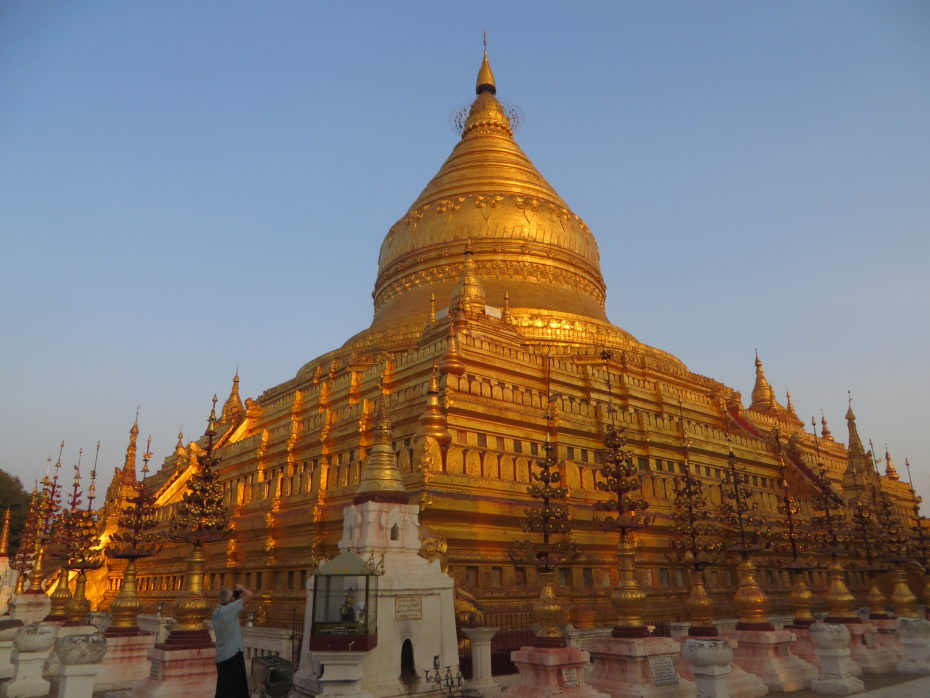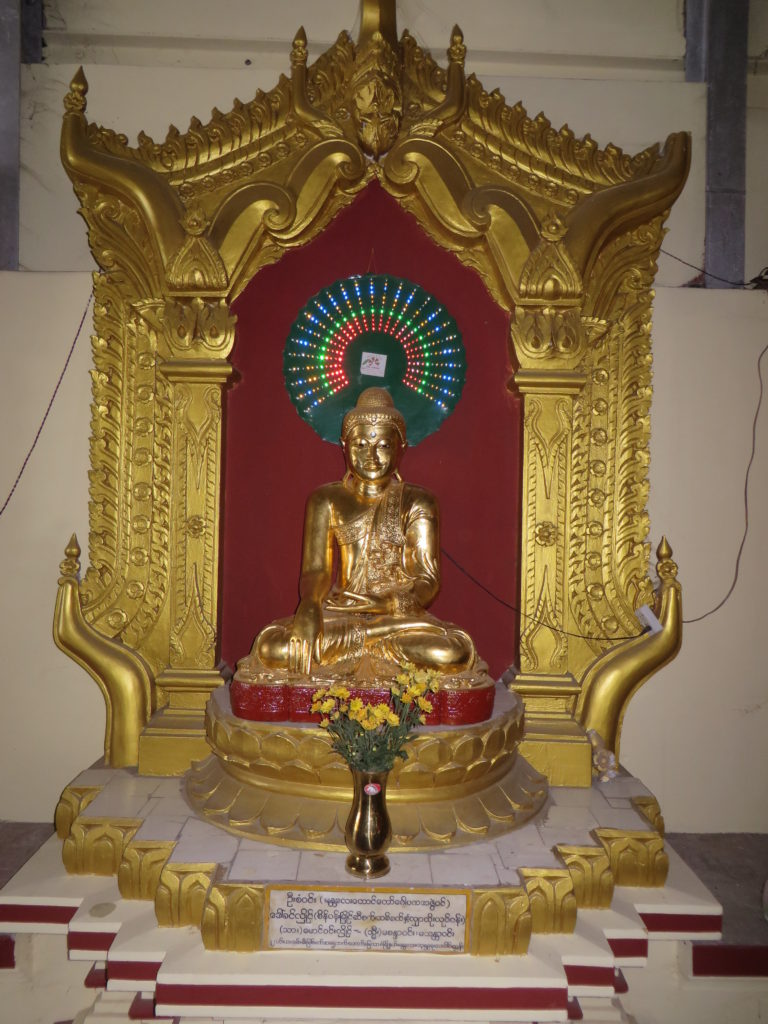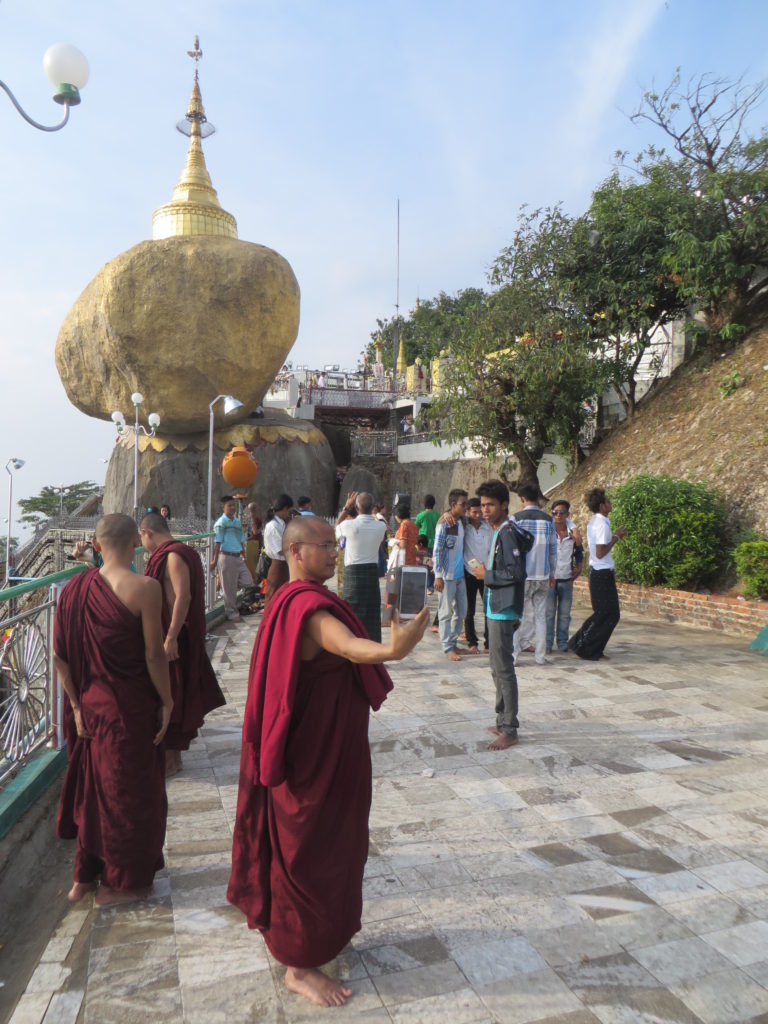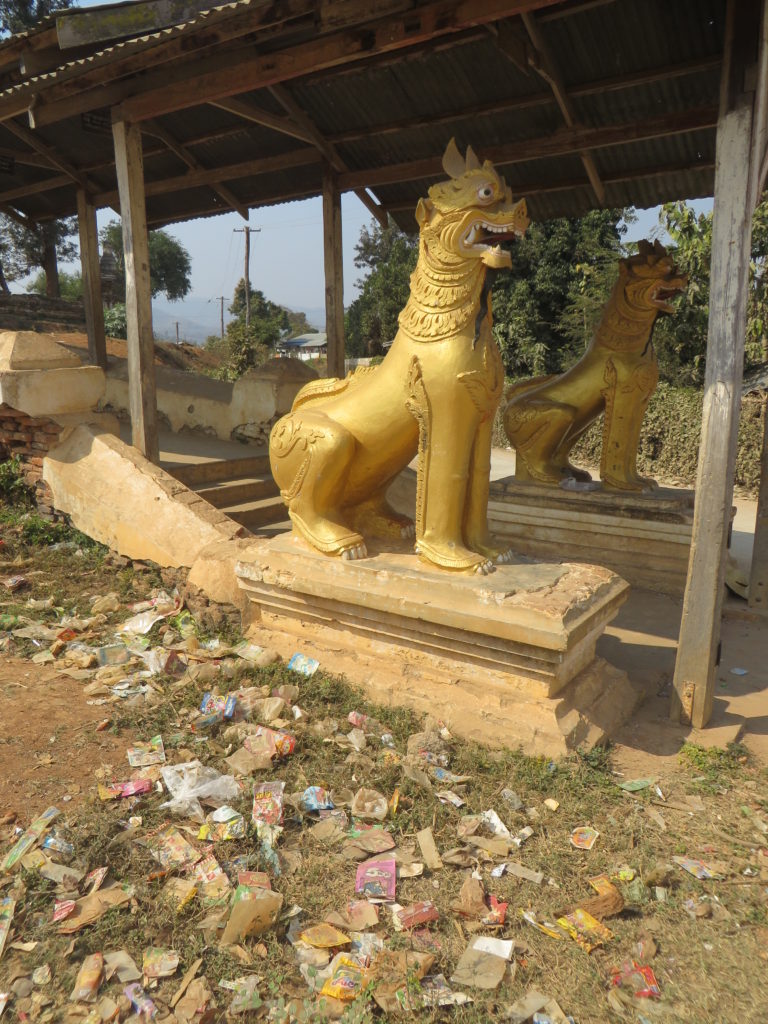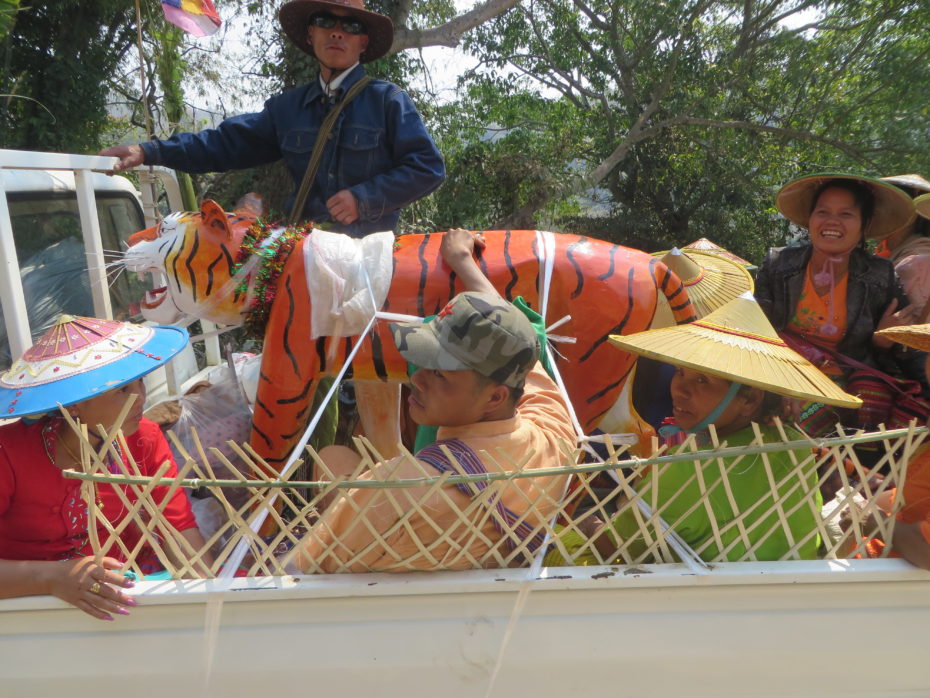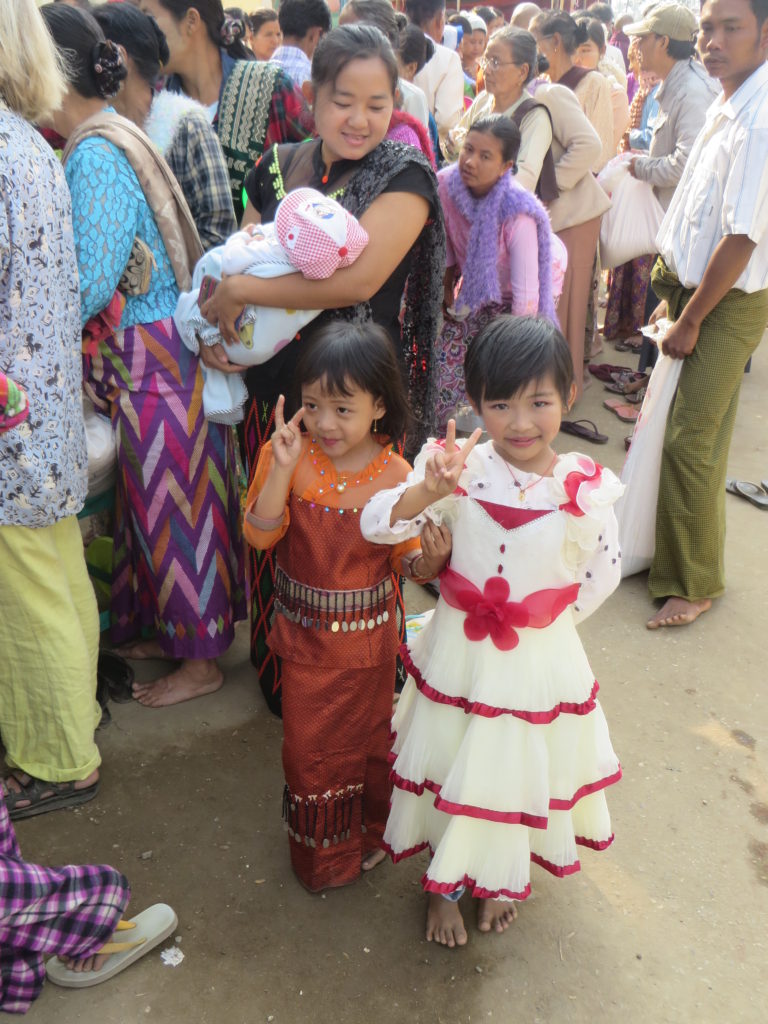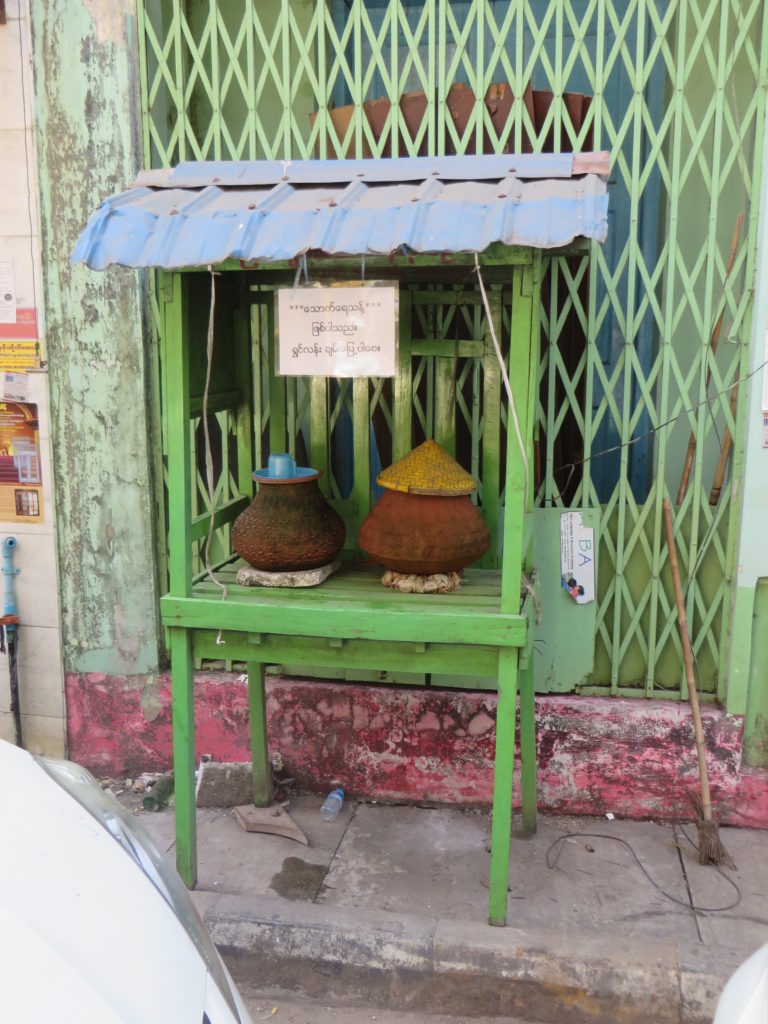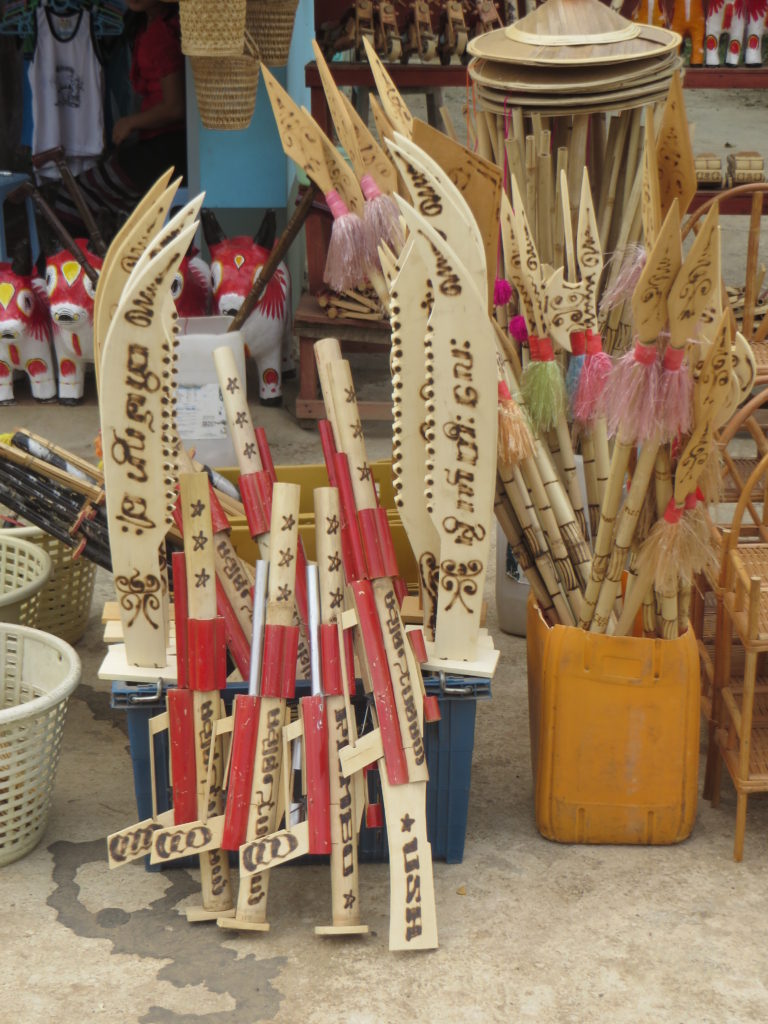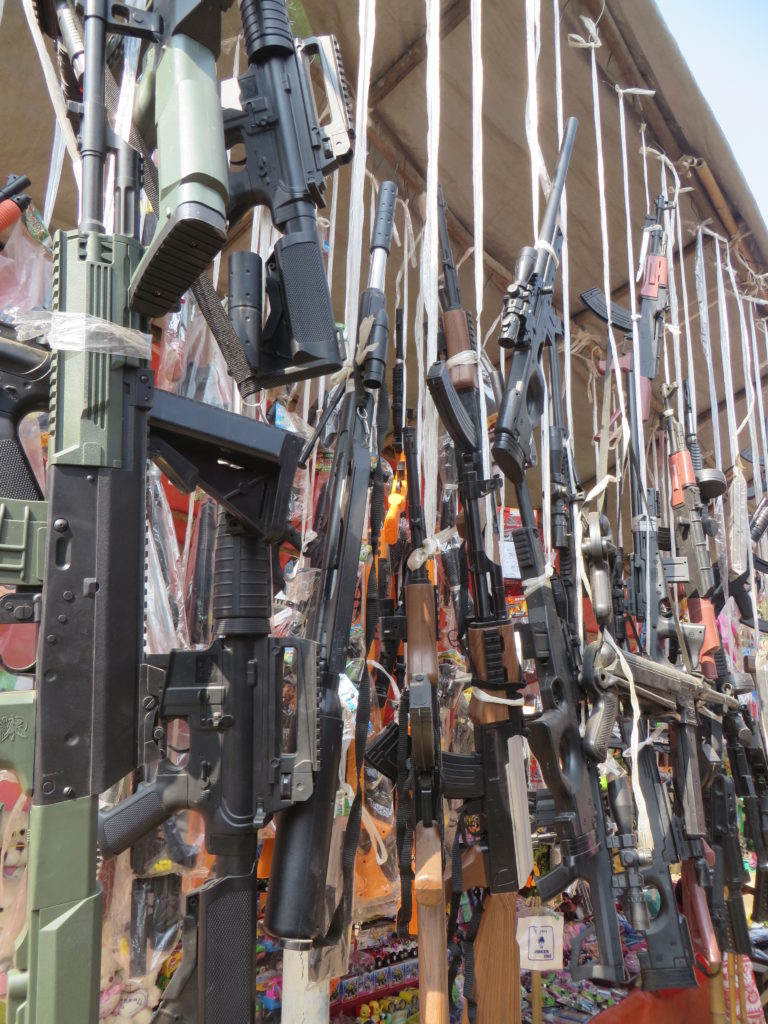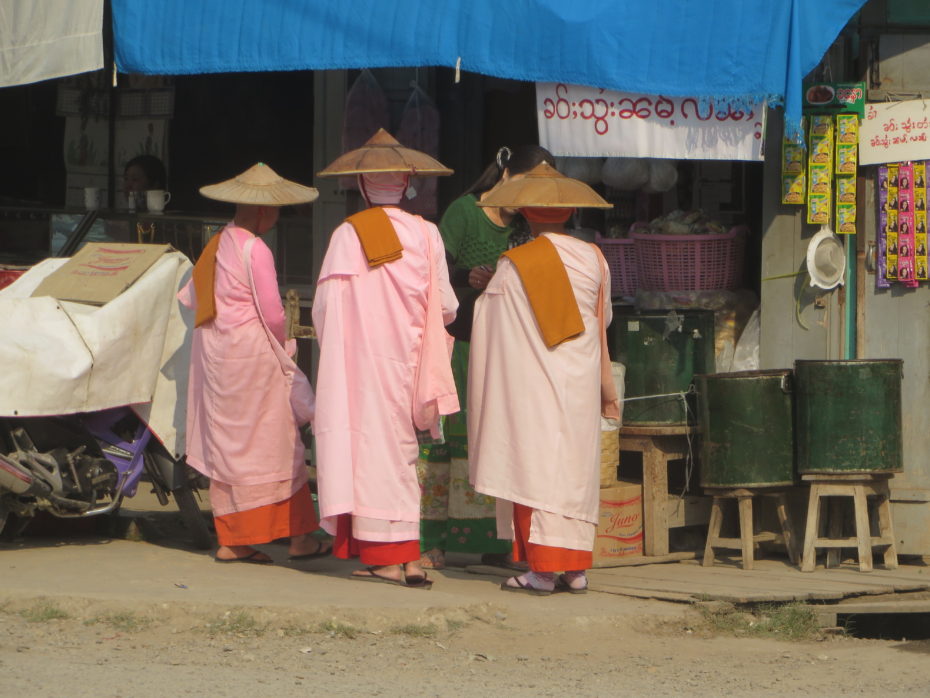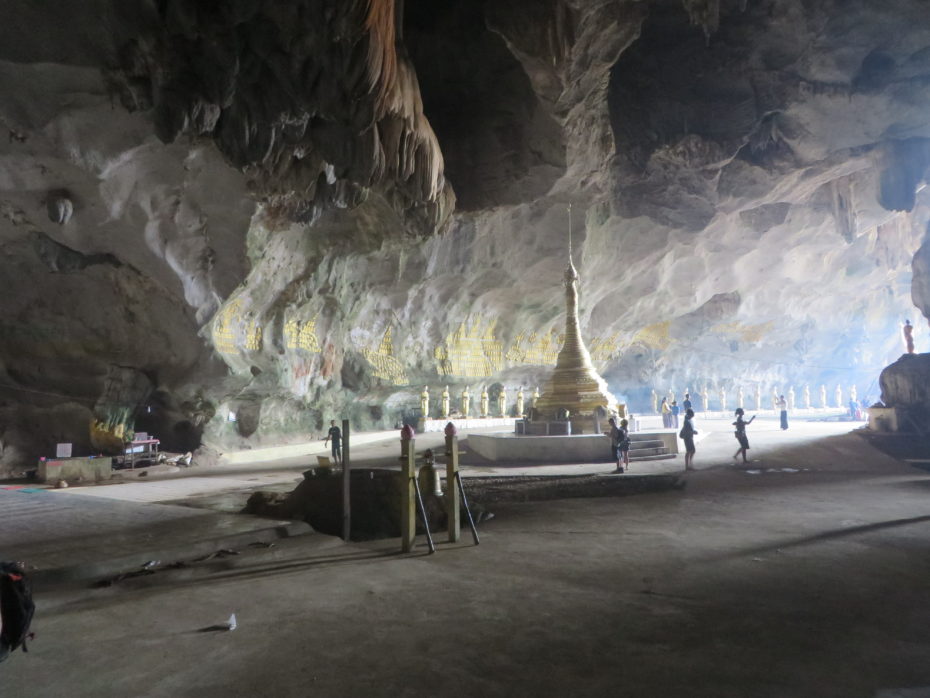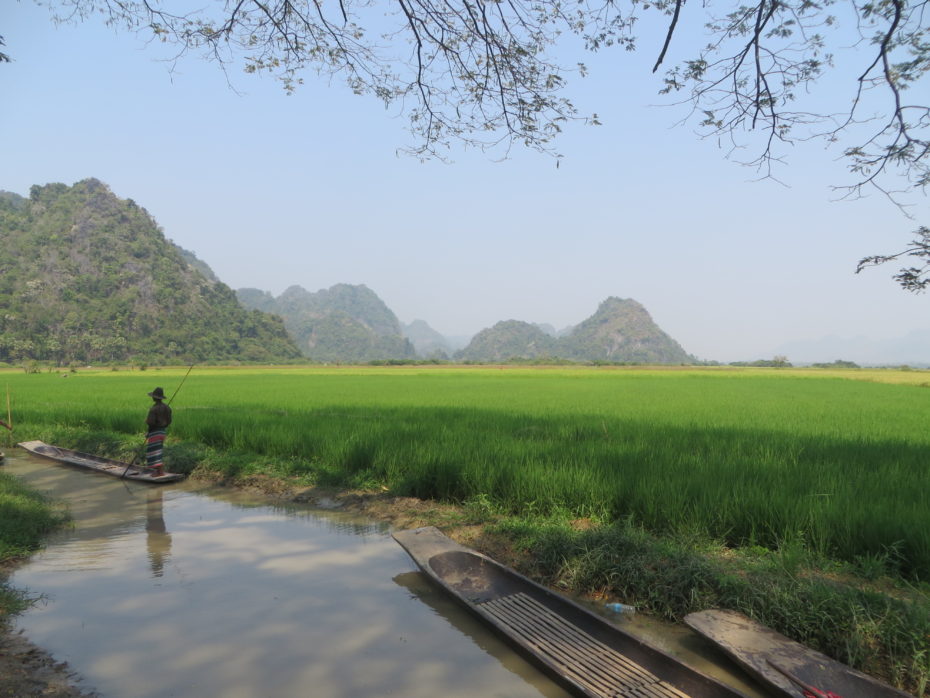Just as you would imagine, your typical Myanmar Buddhist temple is a haven of serenity. Even the occasional clang of a sacred bell that adherents make only adds to the atmosphere of calm reverence as the chime’s reverberations pulse gradually into silence. The waft of incense is a gentle call to respect the site’s tranquility under the watchful eye of a golden Buddha. This is the kind of face of Buddha that most of us would think of in imagining the religion. Among the seemingly countless temples many have four statues of Buddha at the centre points of each side of the walls of a square layout but each of the four physical representations of the face echoes an opposing character trait of the religion as it exists in the country.
The first subtle hint that all is not quite so serene are the flashing halos of disco lights often found behind the statues’ or images’ heads, an incongruous, modern addition if ever there was one. Some chambers with several such illuminations lack only the beat of a kick drum to get the party started.
If you thought that pilgrimage sites would serve to exemplify the serenity of the faith you will be sorely disappointed. Take Kyaiktiyo, where the object of veneration is the glorious absurdity of a huge rock smothered in gold leaf, balanced so finely it can be tilted with a firm shove. The holy route leading to this article of faith firstly requires a vomit inducing roller-coaster of a ride, wedged into the back of a truck, whose ticket price worryingly includes life insurance. Its second stage is that wonderous confluence, when deep abiding religious faith meets cheap plastic tat. Secular joys of Chinese made toys sit beside gaudy religious iconography probably churned out of the same factory, happy to do likewise for Hindus, Muslims and Christians. Naturally no one told the kids to be quiet or stop running around.
What the two thousand four hundred years of wisdom has failed to teach the people however, is to clean up after them. The hillside under the site is strewn with discarded packages, cans and wrappers, hardly unique example among the places of worship.
Where serenity truly succumbs utterly unto chaos is during festivals. Whilst the occasions are certainly religious and the temples themselves strive to remain calm, the goings on at their doorsteps are anything but. It was difficult to imagine that the Baw Gyo festival in Shan state had anything to do with religion at all. Around the temple a fairground roared with pop music and screams of delight; blazing neon of every colour electrified the night’s sky. You could drink whisky, get a tattoo or, with a stick, torment a sad, bedraggled lion crammed into a miniscule cage. Although the latter being an improvised entertainment rather than an official one. Even gambling is allowed for the festival’s duration. Singers wailed and actors bellowed as the discordant, erratic, metallic crashing of traditional music competed with the human hubbub of excitement. And trash fell in heaps from careless hands.
Is it perhaps at these times that the people are simply returning to the hard-wired, underlying culture of nat spirit worship that a thousand years of Buddhism have failed to quench? See The nat shrines of Myanmar if you missed my post on the subject.
Buddha said, “love the whole world as a mother loves her only child”. As a traveler in Myanmar it is easy to see that the people have embraced these words, apart from taxi drivers of course – whilst not the parasitic vermin found in neighbouring Thailand, most are only too eager to overcharge a foreigner like the world over. I found a true kindness in the country that was only rarely tainted by the flashing dollar signs of tourist wallets. Whether that continues as greater numbers of us profit from the increasing openness of Myanmar remains to be seen. Certainly other forms of transport operatives have begun to embrace overcharging but that is no reflection on the bulk of the population.
A simple expression of this kindness can be found throughout the country: small structures holding containers of water and cups to slake the thirst of any passer-by and are maintained by charitable locals. You are rarely far from one whether in a big city or a quiet country lane.
A little question mark in this aura of love pops up on stalls at pilgrimage sites and festivals: a profusion of weaponry, from serrated wooden swords to plastic machine guns, it seems that boys games have little regard to our notions of Buddhist peace and love. To see such things in a toy shop would come as little surprise in almost any culture but at the holiest of sites of a faith centred on love and peace?
If only such worries ended there. Unfortunately influential figures in the priesthood expound a virulent, anti-Muslim bigotry which finds fertile ground among the majority, Burmese population. As is so often the case many of the seeds of religious rivalry were sown by British, colonial, divide and rule policies and have only festered since then. A telling example of how this mentality has seeped down throughout Burmese culture was talking to the director of an exhibition in Thailand, as part of the refugee community there, on the regime’s human rights abuses. This was a man who had endured six years imprisonment and torture by the state for his political activities but was incapable of understanding that the same motivations that fed his own persecution feed that against the Rohingya. He trotted out the same old lies you hear elsewhere: that they don’t belong in Myanmar and that a British, colonial survey in the south-west of the country found few Rohingya there. Firstly this denies their documented 800 years of history in the country and the only reason the British found so few of them at the time was due to their ethnic cleansing by the Burmese only a few decades before. By bringing them back to work on colonial projects the British were only righting an injustice, albeit not one particularly motivated by charity.
The monk leading the anti Muslim incitement, Wirathu, is supported by religious groups such as Mabatha and has the deranged idea that there is a master plan to bring about an Islamic state. Quite how a totally disenfranchised minority of less than 5% of the population is going to overthrow a brutal military dictatorship, which has been in power for over thirty years, remains a mystery.
Perhaps the guiltiest party in this affair is the one Buddhist in the position to genuinely affect public opinion: Aung San Suu Kyi. Her avowed Buddhist faith and Nobel Peace Prize for her fight for democracy seems to have engendered no sympathy for the Rohingya Muslim’s democratic rights. She continues to churn out the excuse that there was violence on both sides, as if there is any kind of equivalence between a small persecuted minority and rampaging mobs backed by security forces burning, looting and killing in Muslim districts. The assertion that a Muslim has committed some violent crime has been sufficient excuse, regardless of evidence, for the wholesale, violent removal of entire communities, with survivors held in concentration camps for “their own protection” and no suggestion of release. Aung San Suu Kyi has embraced political expediency, fearful of losing ethnic Burmese votes. The reality is that the generals will never let her run for president anyway as they know full well it would jeopardise their position of power.
On other issues, such as the destructive, Chinese owned, Letpadaung copper mine she has sided with the authorities rather than with ethnic minorities kicked off their land without compensation and beaten or killed by the police for having the audacity to protest about it. Her faith that the government and security forces might act peacefully, with honour, can only be described as idiotic, given their track record. Indeed, she has little support among the many ethnic minorities who see her as yet another face of Burmese nationalism.
Many Burmese Buddhists have remained true to their faith and spoken out about injustice but many more have simply stood by and allowed the rulers to stoke religious tensions, playing on the lies of ethnic fear preached by a minority. This only serves the military’s goal of justifying continued repression in the run up to elections.
Buddhist culture and wisdom have achieved greatness in Myanmar’s history and many live up to that by standing up to state terror, for others it offers a beacon, guiding one through the trials of everyday life amongst undoubted poverty. Even with its profound lessons on love and peace it has failed to curb the dark excesses that blight societies of all religions or none. Maybe then the four faces of Buddha are simply four faces of mankind.




